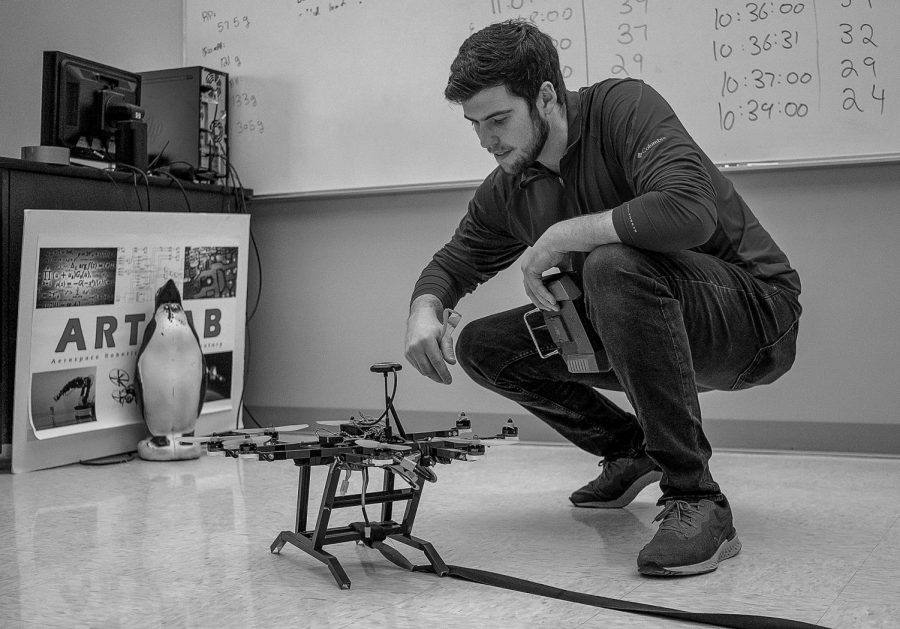Senior design team looks towards future with human-carrying drone
Engineering student Nick Runge works on drone for the design project at South Dakota State University.
February 13, 2020
Imagine being stuck in traffic, late to the big presentation you’ve been working on for months. Or trying to eat breakfast in the car when your $4 coffee spills everywhere. It happens all the time; it’s unavoidable.
But maybe not for long.
A seven-member team of senior mechanical engineering and business students is designing a human-carrying drone for an air taxi system as their senior design project. Within the next two weeks, they will have clearance to fly their prototype drone, named the Hummingbird, proving that they are able to build something that can stay in the air.
In November 2019, the team received an $80,000 grant from NASA through the NASA University Student Research Challenge. This is the largest grant awarded to a senior design project within South Dakota State University’s Jerome J. Lohr College of Engineering, according to one of the project advisers Todd Letcher.
“We think this has the ability to be the new key mode of transportation,” Isaac Smithee, the team’s leader and senior mechanical engineering student, said.
The Hummingbird prototype was built to a seventh of the scale of the final full-size drone named Albatross. The drones are battery powered and will be operated by remote control to start with before becoming autonomous.
The ultimate goal will be for the passenger to press a button and be on their way, completely autonomous.
“Making a drone that can carry a person is hard to do initial testing on,” Smithee said on why the Hummingbird is necessary.
The next big step is receiving the money from NASA, which should be coming soon due to a successful crowdsourcing campaign. The team received half of the money upfront, but was required to raise at least $2,000 before they receive the other half of the grant.
The most expensive purchases they will make will be the motors, which cost roughly $500 each.
Once the team receives the money and orders the parts, the challenge will be where to build the full-size drone. Set to be 12 feet wide, consist of eight propellers and weigh 500 pounds including the passenger, it will need to be built in a large room.
Despite the large dimensions of the Albatross, “one of the requirements is that it must be easy to transport,” said project adviser Marco Ciarcia.
They are planning on the drone being able to fit in the back of a pickup.
The official deadline for the project is Nov. 2020, but the team hopes to be done by the end of the semester in May.
Whether or not that will happen will depend largely on if parts are available and shipping speed.
“I’m pretty excited, I think they’re going to do it [finish by May],” Letcher said.
























